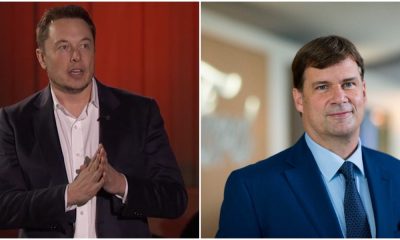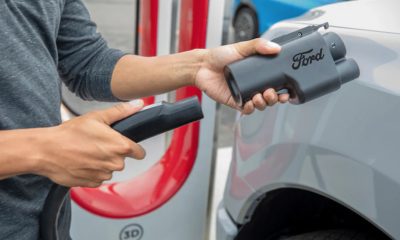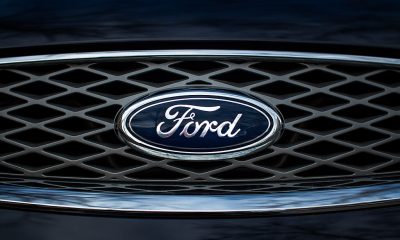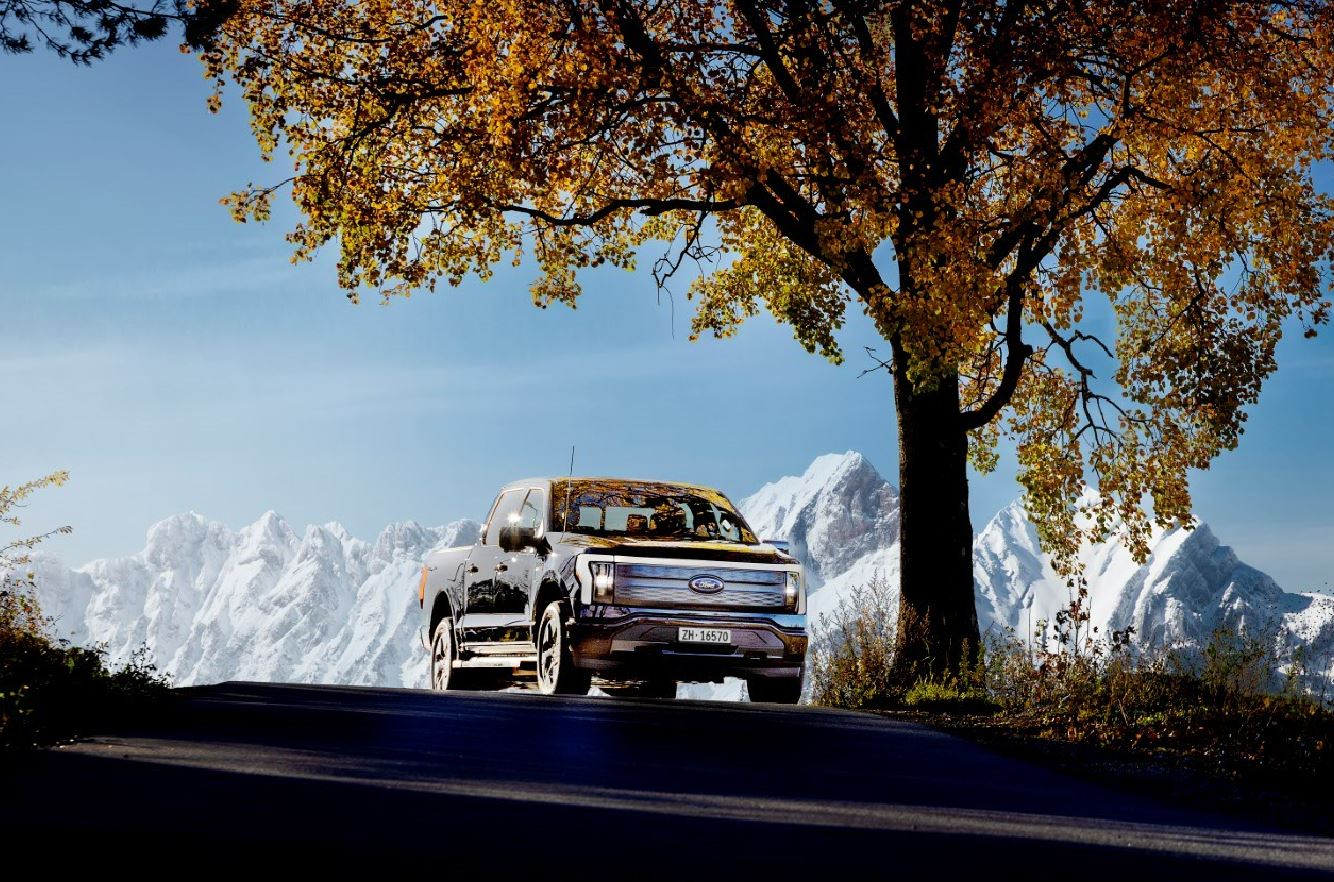

News
Ford’s love affair with EVs softens as profitability and consumer trends take focus
Update: headline updated to show Ford is still committed to EVs, just at a less intense rate.
Ford’s love affair with EVs is softening, the automaker announced today, as it shifted plans for its next few vehicles to be hybrid-electric instead of fully electric.
The move comes as profitability and consumer trends are taking focus. Ford has struggled to get its head above water in terms of making money on its EVs, scaling back its investment amount on one occasion and adjusting its strategy on another.
Consumers are also showing more interest in hybrids than pure EVs. Studies have shown that hybrid drivers are among the most satisfied on the road, as a recent survey from ACSI displayed increased satisfaction from those drivers over pure EV and gas engine owners.
Ford is taking steps to pull back from its increased focus on EVs and instead go into a new direction. “We’re committed to creating long-term value by building a competitive and profitable business,” Ford’s Vice Chair and CFO John Lawler said. “With pricing and margin compression, we’ve made the decision to adjust our product and technology roadmap and industrial footprint to meet our goal of reaching positive EBIT within the first 12 months of launch for all new models.”
How is Ford’s Strategy Changing?
Ford’s new strategy will see its next three-row SUVs utilize hybrid technologies. It also wants to adjust the speed at which electric vehicle models are released, hoping to be more aligned with customer adoption instead of keeping pace with industry leaders.
Tesla sells well, but Ford, even though it has been the number two brand in the U.S. for EVs, has not been able to keep pace. Tesla, simply put, is head and shoulders above everyone in the market when it comes to reliability, tech, and charging infrastructure. Although Ford has adopted Tesla’s North American Charging Standard (NACS) and gained access to the Supercharger Network, consumers still lean toward the Model 3 and Model Y, two vehicles that have dominated the market for the past several years.
Ford is taking a $400 million non-cash charge for the write-down of certain product-specific manufacturing assets for all previously planned all-electric SUVs. The company will no longer build these models, it said.
Focus on Commercial EVs
Ford will still be building EVs, but its entire game plan will be shifting significantly. Ford’s next-gen EVs will be built at the Ohio Assembly Plant in 2026 and will start with a commercial van.
The E-Transit will still be produced, as it is the best-selling commercial EV van in the country. It also helps business owners keep their bottom line as it has positive impacts on the total cost of ownership.
A New, Low-Cost, High Efficiency EV
Ford will bring a new mid-sized EV pickup to market in 2027 with more range, utility, and useability. It will be the first vehicle that comes as a result of the platform developed by the Ford Skunkworks team that the company established in 2022.
The platform developed by the Skunkworks team will yield more EVs in “multiple vehicle styles” and is designed to scale quickly thanks to its “minimal complexity.”
A new Electric Truck
Ford’s F-150 Lightning was the best-selling EV truck for several months, although Cybertruck overtook it in June. Ford planned to bring a new truck to market next year, labeling it the “T3.” However, this has been pushed back.
Ford will now bring the T3 pickup to market in the latter half of 2027. This will offer more features and experiences than any other Ford truck, including upgraded bi-directional charging and advanced aerodynamics. It will be built at the BlueOval City Electric Truck Center in Tennessee.
Overall, Ford’s shift in strategy is probably for the better, considering its business was quite literally hemorrhaging money. It is important that it develops and builds EVs, as many customers are still in the market for one and now prefer that powertrain to any other.
However, in the grand scheme, hybrids have taken over as the most desirable powertrain, which is pushing Ford to make this shift in the name of making money and going with what consumers want.
I’d love to hear from you! If you have any comments, concerns, or questions, please email me at joey@teslarati.com. You can also reach me on Twitter @KlenderJoey, or if you have news tips, you can email us at tips@teslarati.com.
News
Elon Musk confirms Tesla FSD V14.2 will see widespread rollout
Musk shared the news in a post on social media platform X.
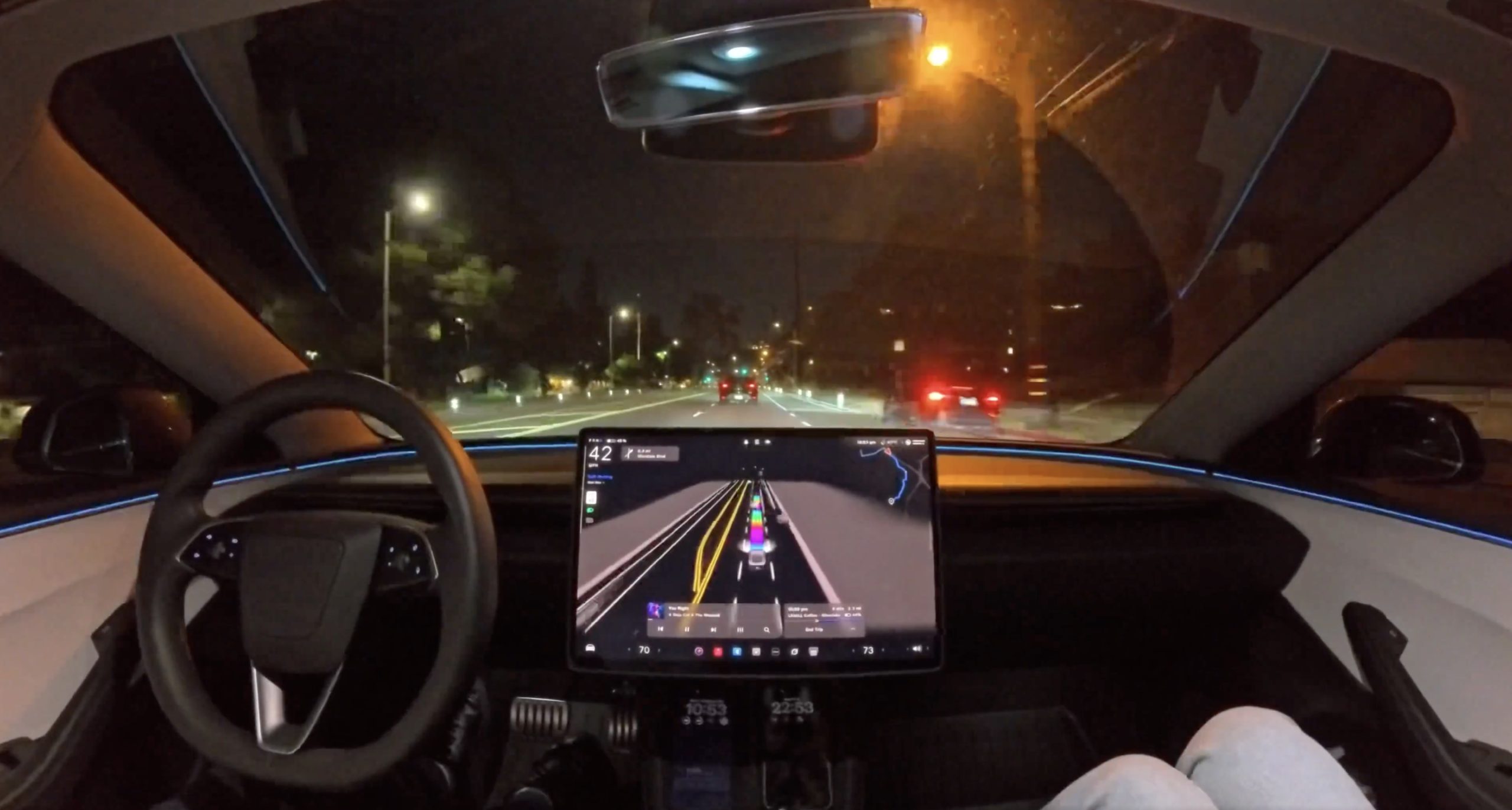
Elon Musk has confirmed that Tesla will be implementing a wide rollout of Full Self-Driving (FSD) V14 with the system’s V14.2 update. Musk shared the news in a post on social media platform X.
FSD V14.1.2 earns strong praise from testers
Musk’s comment came as a response to Tesla owner and longtime FSD tester AI DRIVR, who noted that it might be time to release Full Self-Driving to the fleet because V14.1.2 has already become very refined.
“95% of the indecisive lane changes and braking have been fixed in FSD 14.1.2. I haven’t touched my steering wheel in two days. I think it’s time, Tesla AI,” the longtime FSD tester wrote.
AI DRIVR’s comment received quite a bit of support from fellow Tesla drivers, some of whom noted that the improvements that were implemented in V14.1.2 are substantial. Others also agreed that it’s time for FSD to see a wide release.
In his reply to the FSD tester, CEO Elon Musk noted that FSD V14’s wide release would happen with V14.2. “14.2 for widespread use,” Musk wrote in his reply.
Mad Max mode makes headlines
One of the key features that was introduced with FSD’s current iteration is Mad Max mode, which allows for higher speeds and more frequent lane changes than the previous “Hurry” mode. Videos and social media posts from FSD testers have shown the system deftly handling complex traffic, merging seamlessly, and maintaining an assertive but safe driving behavior with Mad Max mode engaged.
Tesla AI head Ashok Elluswamy recently noted in a post on X that Mad Max mode was built to handle congested daytime traffic, making it extremely useful for drivers who tend to find themselves in heavy roads during their daily commutes. With Musk now hinting that FSD V14.2 will go on wide release, it might only be a matter of time before the larger Tesla fleet gets to experience the notable improvements of FSD’s V14 update.
News
Multiple Tesla Cybercab units spotted at Giga Texas crash test facility
The vehicles were covered, but one could easily recognize the Cybercab’s sleek lines and compact size.
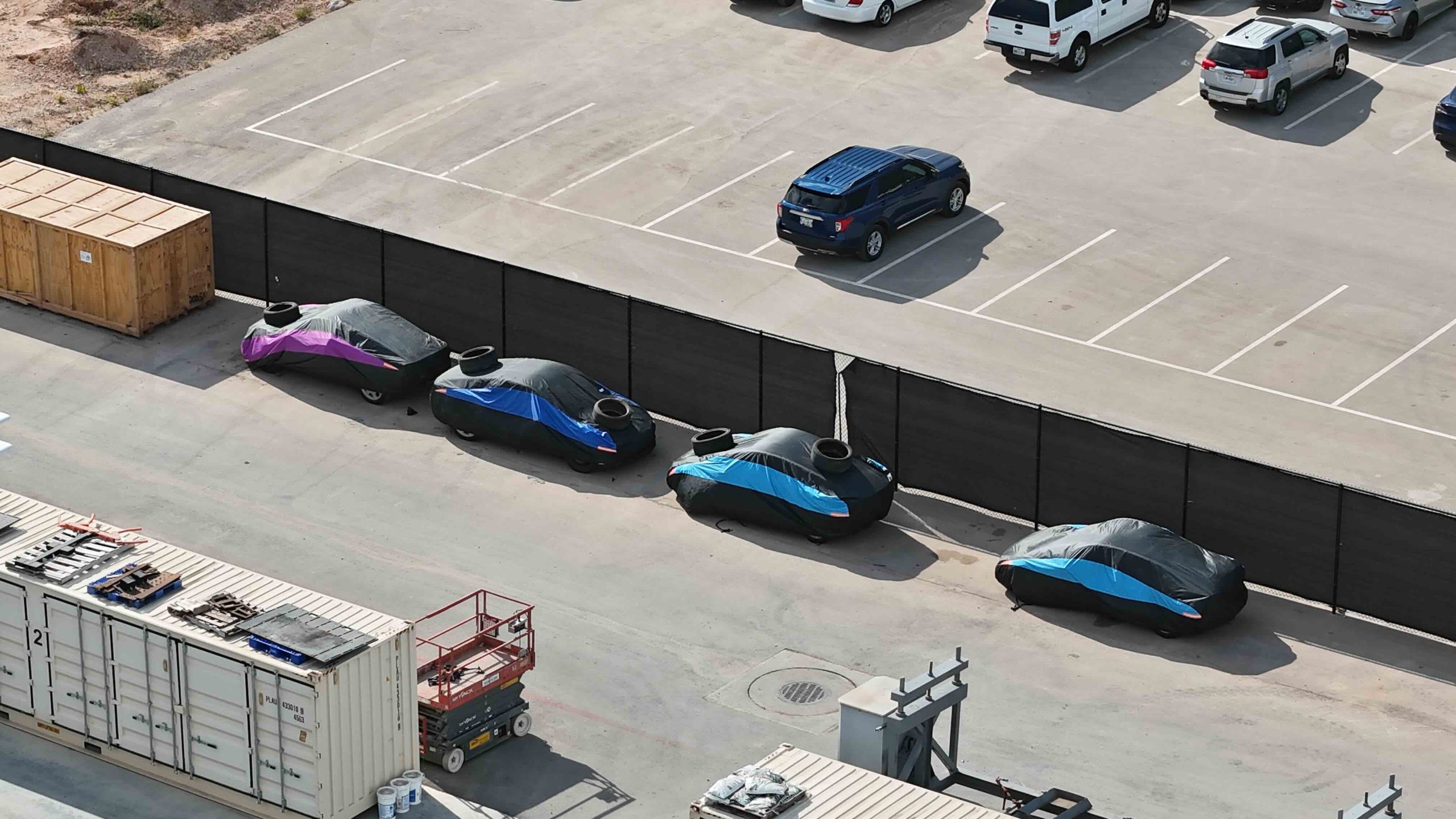
It appears that Tesla is ramping up its activities surrounding the development and likely initial production of the Cybercab at Giga Texas. This was, at least, hinted at in a recent drone flyover of the massive electric vehicle production facility in Austin.
Cybercab sightings fuel speculations
As observed by longtime Giga Texas drone operator Joe Tegtmeyer, Tesla had several covered Cybercab units outside the facility’s crash testing facility at the time of his recent flyover. The vehicles were covered, but one could easily recognize the Cybercab’s sleek lines and compact size. Tegtmeyer also observed during his flyover that production of the Model Y Standard seems to be hitting its pace.
The drone operator noted that the seven covered Cybercabs might be older prototypes being decommissioned or new units awaiting crash tests. Either scenario points to a ramp-up in Cybercab activity at Giga Texas, however. “In either case, this is another datapoint indicating production is getting closer to happening,” Tegtmeyer wrote on X, highlighting that the autonomous two-seaters were quite exciting to see.
Cybercab production targets
This latest sighting follows reports of renewed Cybercab appearances at both the Fremont Factory and Giga Texas. A test unit was recently spotted driving on Giga Texas’ South River Road. Another Cybercab, seen at Tesla’s Fremont Factory, appeared to be manually driven, suggesting that the vehicle’s current prototypes may still be produced with temporary steering controls.
The Tesla Cybercab is designed to be the company’s highest-volume vehicle, with CEO Elon Musk estimating that the autonomous two-seater should see an annual production rate of about 2 million units per year. To accomplish this, Tesla will be building the Cybercab using its “Unboxed” process, which should help the vehicle’s production line achieve outputs that are more akin to consumer electronics production lines.
Elon Musk
Teslas in the Boring Co. Vegas Loop are about to get a big change
Elon Musk has a big update for Teslas that operate within the Boring Company’s Vegas Loop.
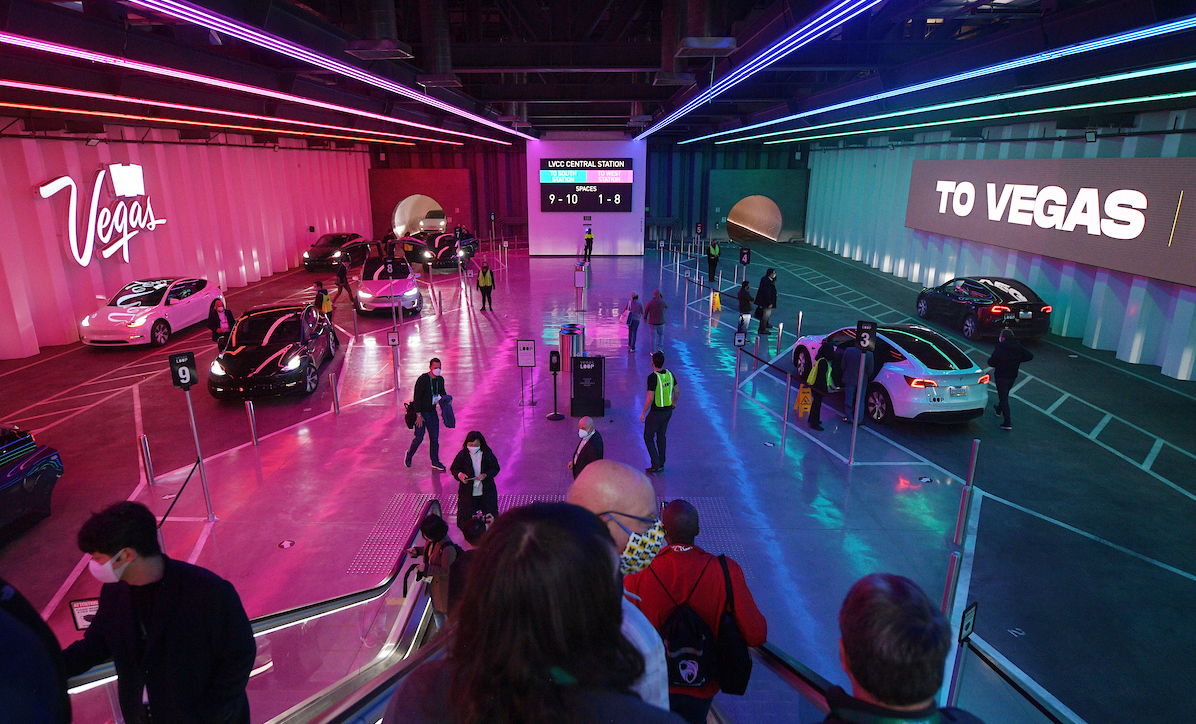
Tesla vehicles operating in the Boring Company’s Vegas Loop are about to get a big change, CEO Elon Musk said.
In Las Vegas, the Boring Company operates the Vegas Loop, an underground tunnel system that uses Teslas to drop people off at various hotspots on the strip. It’s been active for a few years now and is expanding to other resorts, hotels, and destinations.
Currently, there are stops at three resorts: Westgate, the Encore, and Resorts World. However, there will eventually be “over 100 stations and span over 68 miles of tunnel,” the Vegas Loop website says.
The Loop utilizes Tesla Model 3 and Model Y vehicles to send passengers to their desired destinations. They are currently driven using the Full Self-Driving suite, but they also have safety drivers in each vehicle to ensure safety.
Tesla Cybertruck rides are crucial for Vegas Loop expansion to airport
Tesla and the Boring Company have been working to remove drivers from the vehicles used in the Loop, but now, it appears there is a set timeline to have them out, according to CEO Elon Musk:
The Tesla cars operating in The Boring Company tunnels under Las Vegas will be driverless in a month or two https://t.co/mX4nNrJui9
— Elon Musk (@elonmusk) October 18, 2025
Musk says the Boring Co. will no longer rely on safety drivers within the Teslas for operation. Instead, Tesla will look to remove the safety drivers from the cars within the next month or two, a similar timeline for what Musk believes the Robotaxi platform will look like in Austin.
In Texas, as Robotaxi continues to operate as it has since June, there are still safety monitors within the car who sit in the passenger’s seat. They are there to ensure a safe experience for riders.
When the route takes the vehicle on the highway, safety monitors move into the driver’s seat.
However, Tesla wants to be able to remove safety monitors from its vehicles in Austin by the end of the year, Musk has said recently.
In early September, Musk said that the safety monitors are “just there for the first few months to be extra safe.” He then added that there “should be no safety driver by end of year.”
The safety driver is just there for the first few months to be extra safe.
Should be no safety driver by end of year.
— Elon Musk (@elonmusk) September 4, 2025
-
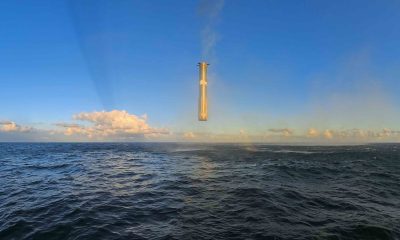
 Elon Musk2 days ago
Elon Musk2 days agoSpaceX posts Starship booster feat that’s so nutty, it doesn’t even look real
-
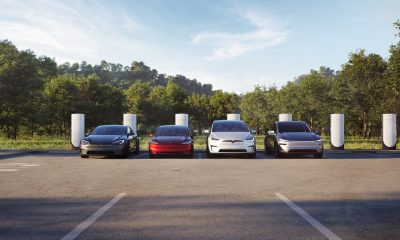
 Elon Musk18 hours ago
Elon Musk18 hours agoTesla Full Self-Driving gets an offer to be insured for ‘almost free’
-
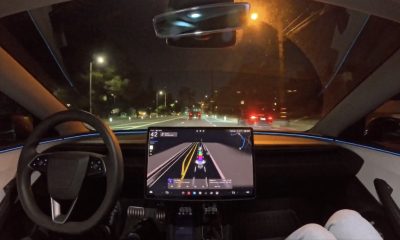
 News14 hours ago
News14 hours agoElon Musk confirms Tesla FSD V14.2 will see widespread rollout
-
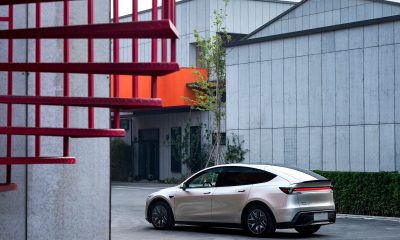
 News4 days ago
News4 days agoTesla launches new interior option for Model Y
-

 News2 days ago
News2 days agoTesla is adding an interesting feature to its centerscreen in a coming update
-
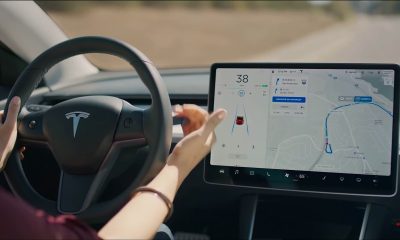
 News3 days ago
News3 days agoTesla widens rollout of new Full Self-Driving suite to more owners
-
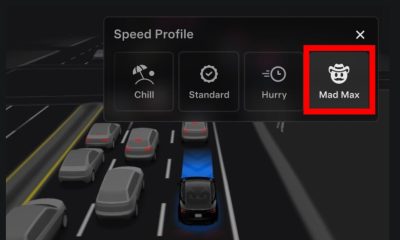
 News3 days ago
News3 days agoTesla launches ‘Mad Max’ Full Self-Driving Speed Profile, its fastest yet
-

 News4 days ago
News4 days agoTesla makes big move with its Insurance program


